Imagine the possibility of walking with pangolins. Adrian Steirn’s recent photographic series The Pangolin Men captures a unique and exceptional scenario of beasts and men. The images are captivating. The skin of the minders glows as they walk alongside these armour-plated, cat-size mammals. It is intriguing to wake up and discover the possibility of something that you never knew existed. I scratched a little to find out more about these images, about pangolins and the Pangolin Men.Written by Andrew Hofmeyer

Pangolin: The Most Trafficked Mammal in the World
Let’s not beat around the bush. This diminutive mammal is under threat of extinction before most people even know it is in danger. For pangolins, this is the reality. There are eight species of pangolin, four in Asia and another four in Africa. The appetite of the Asian black market has seen millions of these mammals butchered for their meat and their scales. While the flesh is considered a delicacy, the scales – made of keratin – are used in a powdered form to treat anything from stomach cramps to impotency.

In June 2016 a shipment of 4 tonnes of pangolin scales was seized in Hong Kong. Pause for a second to process this figure which represents a conservative estimate of 10-20% of the actual trade. One shipment from one place. Not of heavy flesh and blood wriggling animal but dry, lifeless, nail-like scales. While a live pangolin, bones and all, can weigh between 2 and 35 kgs, the dry weight in scales is a fraction of this. 4 tonnes of confiscated scales represents between 1100 and 6600 wild animals. In Pangolin numbers this drop in an ocean of illegal trafficking represents the demise of a species.
The Tikki Hywood Trust
Lisa Hywood founded the Tikki Hywood Trust in 1994 in the memory of her father who she says “looked to the future with optimism”. It is this ethos that drives the Trust’s work, an ethos says Lisa, that has not changed in over 20 years.
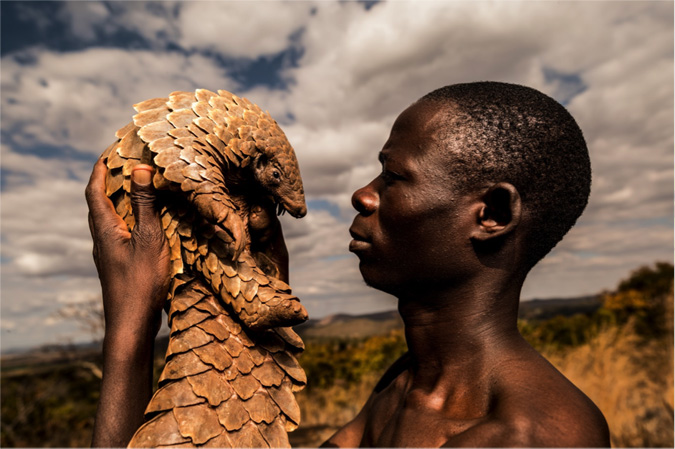
The Trust has a three-pronged approach, Conservation, Legislation and Education and they all have an important role to play. “It’s no good,” says Lisa “if the law enforcement officers don’t know what the penalties are or the judges aren’t aware of the sentences”. Education for the Tikki Hywood Trust means a focus on ALL stake-holders, the public (especially children) and conservation personal as well as law enforcement from police officers to judges.
In addition to this, the Trust focuses on changing legislation itself. Lisa pointed out that South Africa has the strongest legislation for pangolin trafficking. If caught in possession of a pangolin the fine in South Africa is a whopping US$ 694000 and 10 years imprisonment. However, she drove her point home by asking me if I knew how many convictions there had been? “None?” I ventured. “Exactly”. There is a massive disconnect between the laws, the judiciary, law enforcement and conservation. If all stakeholders are not informed and aware then criminals and poachers simply fall through the cracks.
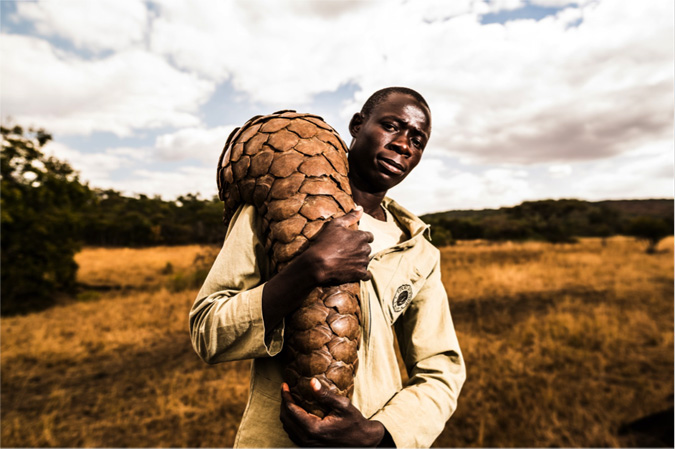
In Zimbabwe, on the other hand, the approach of educating all stakeholders has yielded tangible results. “We have 9 years on first offence, 11 years on second offence and a $5000 fine. In 2015, 47 pangolin poachers were sentenced to 9 years in jail”. Magistrate Tendai Mahwe said, “This is a serious offence which is now prevalent and deterrent sentences are called for if pangolins are not to face extinction”. With sentences like this being passed, it results in a substantial deterrent for would-be poachers.
Lisa is adamant that conservation is all about awareness. Knowing about the plight of pangolins, who to contact and what to do translates directly into saving pangolin lives across the globe. “Conservation is about all of us, not just one animal. We need all the animals”. In addition to this Lisa says that for her, conservation is a team effort. Enter the Pangolin Men and Adrian Steirn.
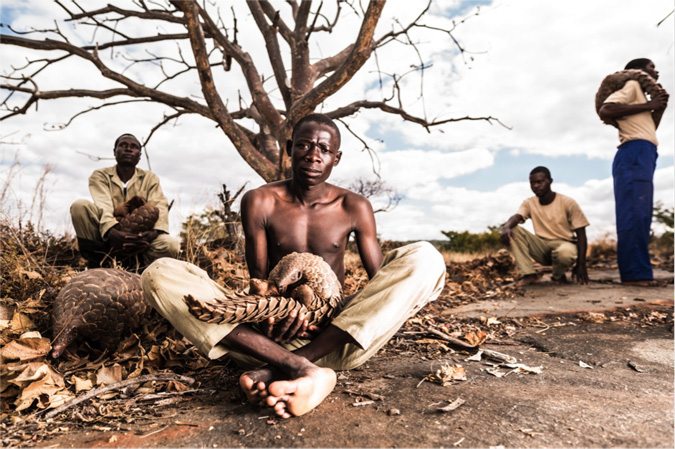
The Pangolin Men
“It was a moment where time stood still,” says Lisa Hywood recalling her first encounter with a trafficked pangolin. “I received this foul-smelling sack and inside was this heavy lump. When I opened it there was this one eye looking at me. It was the saddest most enduring eye that I have ever experienced. In that one look, I felt that she understood me and I had no idea about her”.
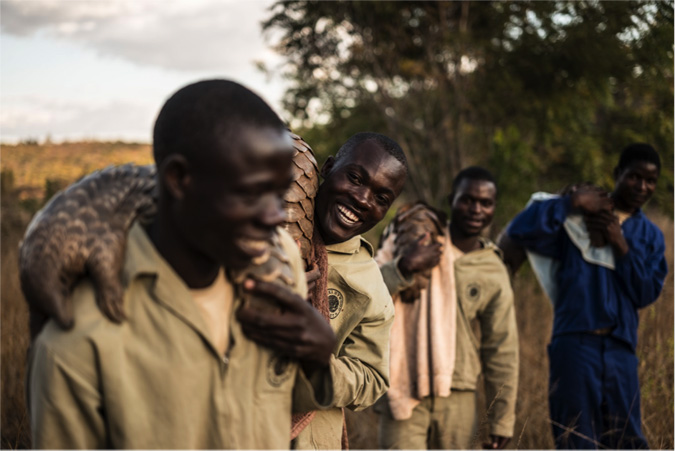
This particular pangolin, a female who Lisa called Negomo, survived the early days of the Trust’s ignorance. Through working with her, Lisa realised that pangolins, like baby elephants, needed specialised one-on-one care and attention to successfully rehabilitate them and return them to the wild. “I would spend many many hours just foraging and walking and looking and watching and studying these animals to see if I could get an inner idea as to what we were missing, why were these animals so difficult to keep in captivity”. Lisa realised fairly quickly that their best chance of recovery and survival meant being in as natural an environment as possible.
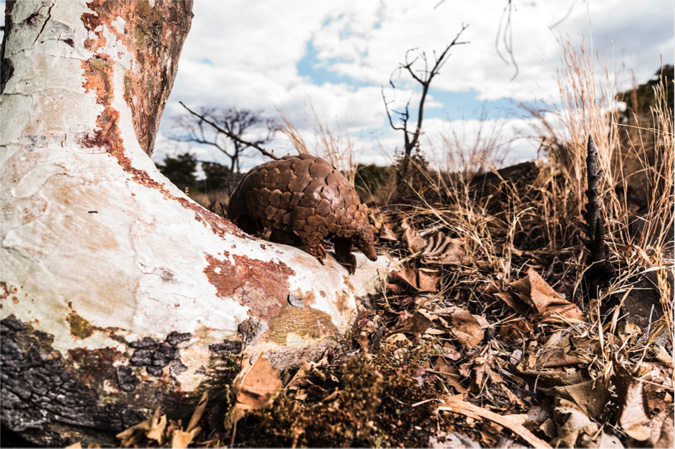
“A pangolin will forage from anywhere between 3 to 4 plus hours,” she says “so it is quite a labour-intensive job”. Rescued pangolins are often extremely compromised, suffering from stress, malnutrition and dehydration. The pangolin minder accompanies the pangolin into the bush so that they can forage without being disturbed. A relationship naturally develops between the minders and the pangolins.
The Pangolin Men are employed by the Tikki Hywood Trust who screen and vet candidates. “It is a process that is fairly lengthy and stringent and we look for specific qualities in each individual”. Individuals have then trained in all things pangolin. Every day the pangolins are weighed, observations are recorded, the temperature, weather conditions and the movement of the pangolins. Lisa, resident zoologist Ellen Connelly and local and international vets are co-authoring papers about pangolins. The data collected is being used to make a real contribution to our knowledge and understanding of pangolin behaviour.
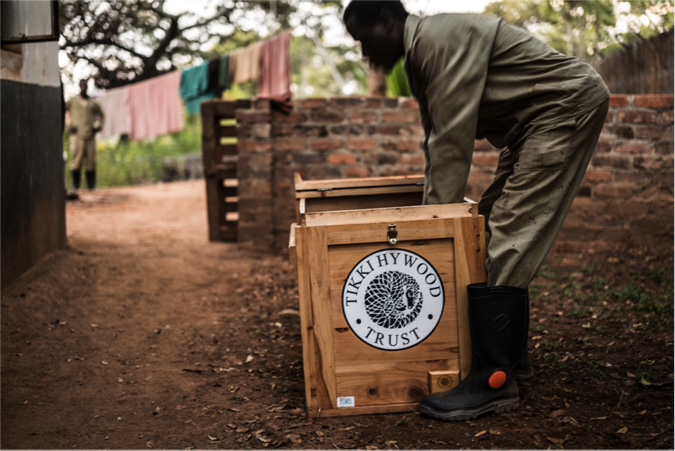
The work that the Pangolin Men do is fundamental to the lives of these animals. It is the relationship between these men and the pangolins that is so captivating. Today there are 20 of these Pangolin Men.
Collaboration is Key
For the last three years, the Tikki Hywood Trust has been working with Patrick Mavros Jewellers to create a range of pangolin-inspired jewellery. Through this collaboration, Adrian Steirn was invited to capture the images of these men as they walked with the pangolins.

Having a natural affinity with animals naturally lead Adrian to wildlife photography and today he travels around the world capturing rarely seen and exotic animals. On shooting the Pangolin Men Adrian says “It was amazing. I’ve been shooting in the bush for many years and I have never seen a pangolin in the wild. To go in there and have an opportunity to get access to photograph those men and what they do every single day was truly something that I cherished”.
“I always wanted to tell stories that create positive change” says Adrian. To translate the world into a single image that conveys at a glance the importance of the subject matter is a huge challenge. “I wanted to ensure that people sat up and looked and watched and understood and incentivise people who may not be very green or conservation focussed to be enthralled by the beauty of the natural world and I guess, let art pull them into the space where they cared for the first time”.
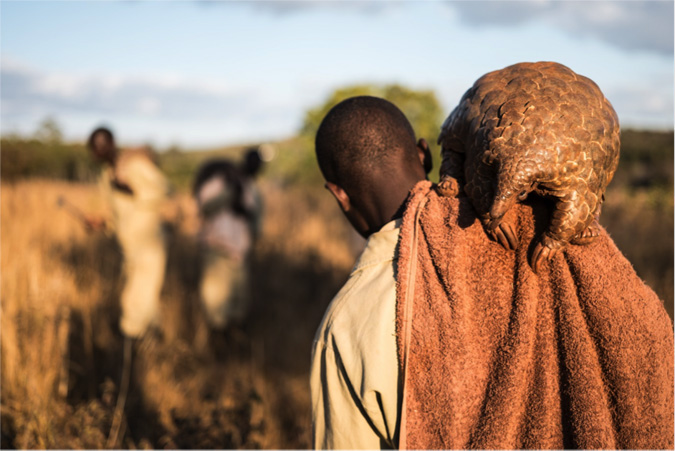
The result is the series of photographs called the Pangolin Men which appeared on Steirn’s project “Beautiful News”. The photos were launched in London alongside the Patrick Mavros Jewellery collection and a percentage of proceeds from both collections will go directly to the Tikki Hywood Trust.
Looking to the Future with Optimism
Despite working with these creatures for over twenty years, Lisa says that the first time they made it into the news was in 2015 and 2016. The focus is always on the flagship species. While this is important and needed it also leaves a whole host of animals in the blind-spot of mainstream media. The pangolin is one of these casualties and bears the unfortunate title of the most trafficked animal in the world.
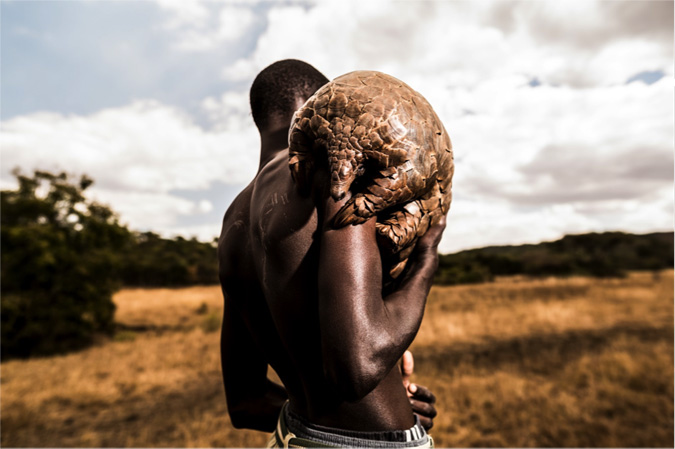
In October of 2016 at the CITES convention in Johannesburg, all eight pangolin species were bumped up into Appendix 1, meaning that all trade in the animals is prohibited by international law. I asked Lisa Hywood if she was pleased about this and was rather surprised and sobered at her response. “The fact that we are only doing this now means that we have already failed them”.
It is not all doom and gloom though and she continued to say that, as an African, she was incredibly proud to see the African delegates take responsibility and act unanimously in favour of protecting these animals. When I asked her what people in cities, at home, in other countries – people who are disconnected from the ‘wild’ in their day to day lives – can do to contribute towards the process of conservation, she replied without hesitation:
“wildlife touches each and every one of us, take responsibility”
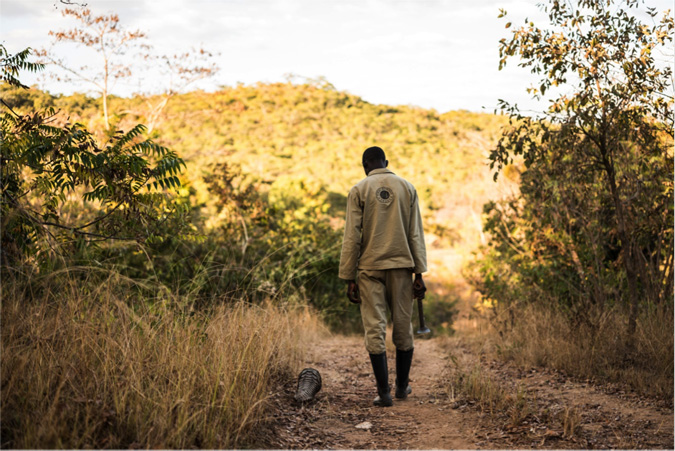
To comment on this story: Login (or sign up) to our app here - it's a troll-free safe place 🙂.![]()






